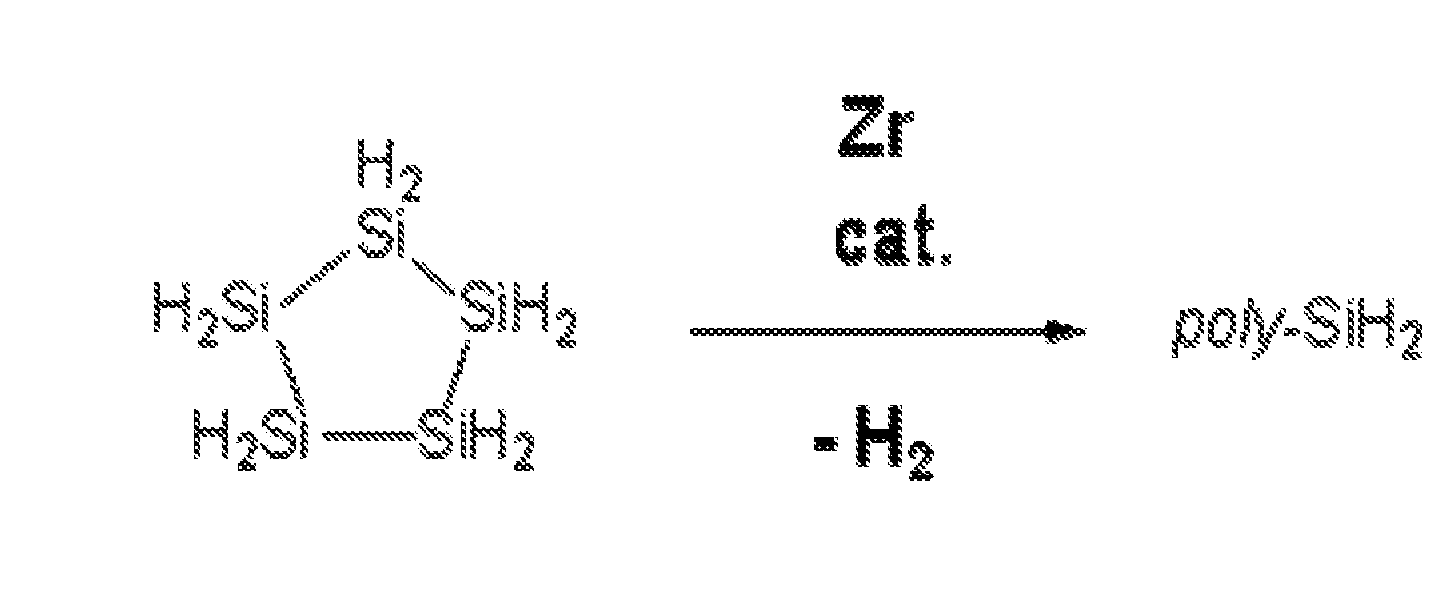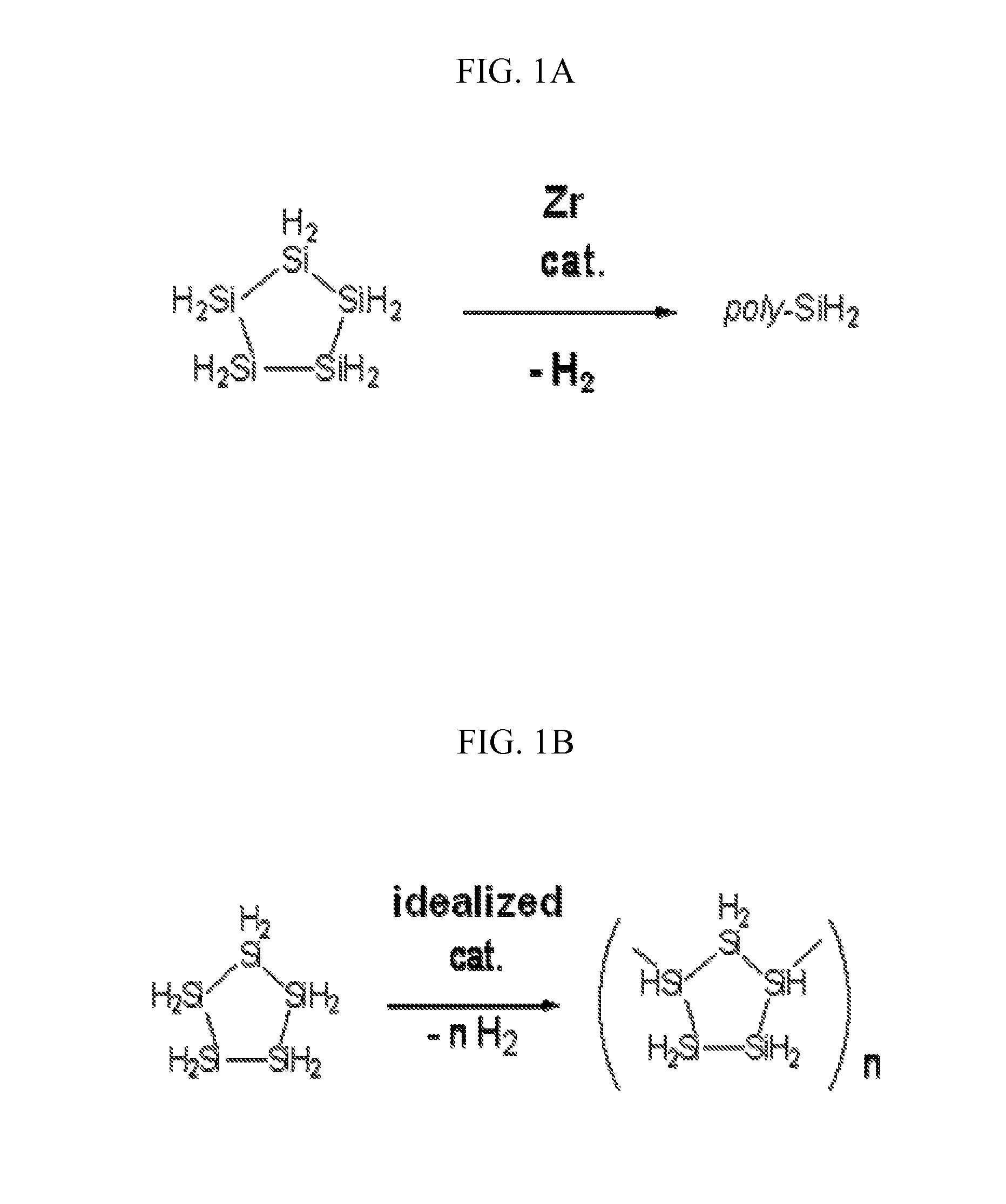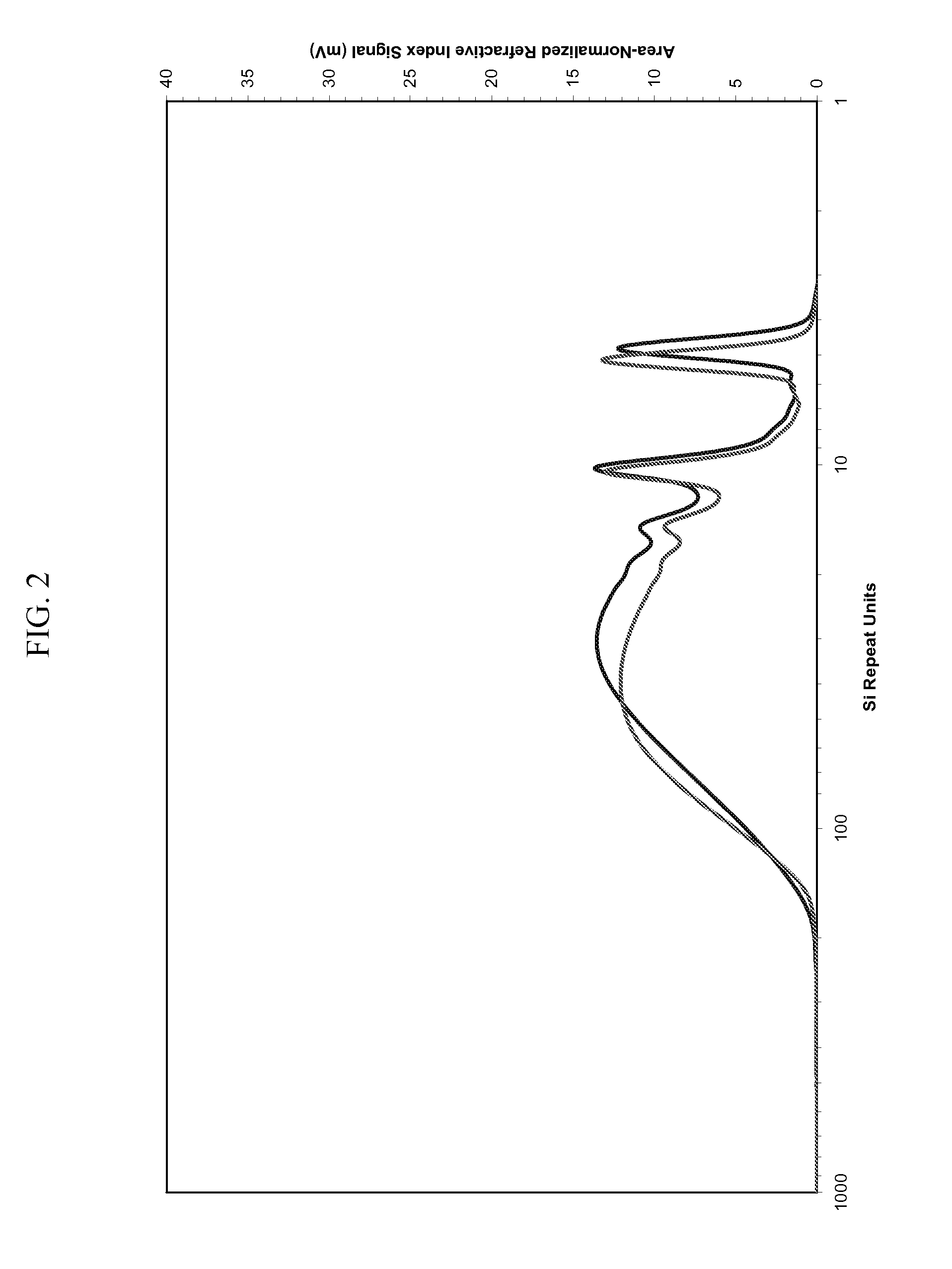Silicon Polymers, Methods of Polymerizing Silicon Compounds, and Methods of Forming Thin Films from Such Silicon Polymers
a technology of silicon polymer and silicon compound, which is applied in the field of polyand/or oligosilane, can solve the problems of less soluble polysilane, insoluble polysilane, and actual cyclopentasilane polymers having appreciable and/or significant branching, and achieve the effect of reducing the hydrogen conten
- Summary
- Abstract
- Description
- Claims
- Application Information
AI Technical Summary
Benefits of technology
Problems solved by technology
Method used
Image
Examples
example 1
Synthesis of Poly(cyclopentasilane) by Heterogeneous Catalysis
[0097] Neat cyclopentasilane (1.0 g) was added to a 4 mL amber vial containing 1 mol % Rh black (6.9 mg) under an inert atmosphere, and this reaction mixture was allowed to stir for 2 h in the loosely capped vial. Then, the reaction was quenched with 2 g of distilled cyclohexane, and the resulting mixture transferred to a 40 mL amber vial (equipped with a stir bar) and further diluted with 5 g of cyclohexane. After 30 min of stirring, insoluble materials were allowed to settle for about 15 min, and the mixture then filtered through a short plug of Celite (primed with distilled cyclohexane), ensuring that the black Rh particles stayed on top of the filter bed. The solution was then transferred to a Schlenk tube and the volatile materials removed by applying high vacuum (<˜300 mTorr) for about 2 h. This drying step should reduce the cyclopentasilane (monomer) content in the resulting product to <10% (monomer content can be...
example 2
Synthesis of Polysilane Mixtures by Heterogeneous Catalysis
[0099] Polymerization reactions similar to Example 2 above were conducted using (1) cyclopentasilane with Ru black as the catalyst and (2) linear heptasilane as the monomer, with Rh black as the catalyst. Using the polymerization of cyclopentasilane by 1 mol % Rh black as the baseline reaction, the method can provide polymeric materials in the MW range of 700-1300 (or 20-45 Si units, as determined by Gel Permeation Chromatography), with the MW increasing at longer reaction times. Furthermore, formation of polymeric products was confirmed by 1H and 29Si NMR spectroscopy. The purified polymer is then mixed with distilled, degassed cyclohexane, and the solution stored in a freezer at a temperature below the melting point of cyclohexane until use, at which time the frozen cyclohexane is removed by vacuum. Printability of inks containing polyhydrosilanes produced by the present process has been established.
PUM
| Property | Measurement | Unit |
|---|---|---|
| mol % | aaaaa | aaaaa |
| particle size | aaaaa | aaaaa |
| particle size | aaaaa | aaaaa |
Abstract
Description
Claims
Application Information
 Login to View More
Login to View More - R&D
- Intellectual Property
- Life Sciences
- Materials
- Tech Scout
- Unparalleled Data Quality
- Higher Quality Content
- 60% Fewer Hallucinations
Browse by: Latest US Patents, China's latest patents, Technical Efficacy Thesaurus, Application Domain, Technology Topic, Popular Technical Reports.
© 2025 PatSnap. All rights reserved.Legal|Privacy policy|Modern Slavery Act Transparency Statement|Sitemap|About US| Contact US: help@patsnap.com



